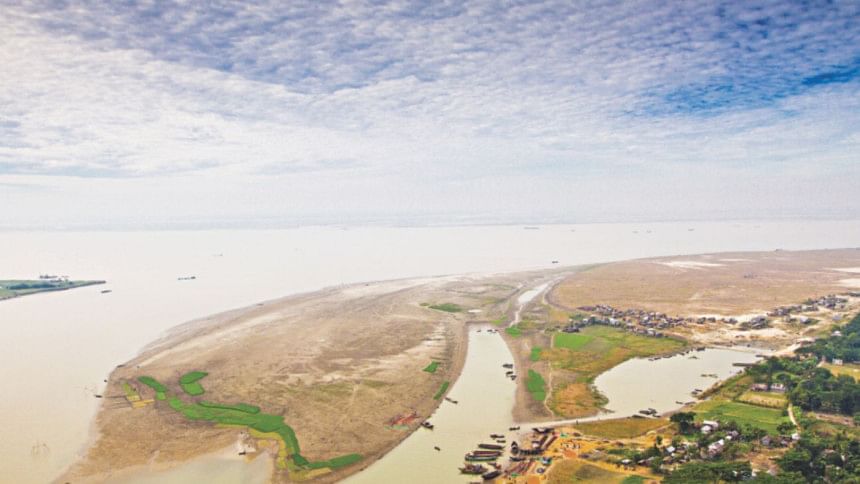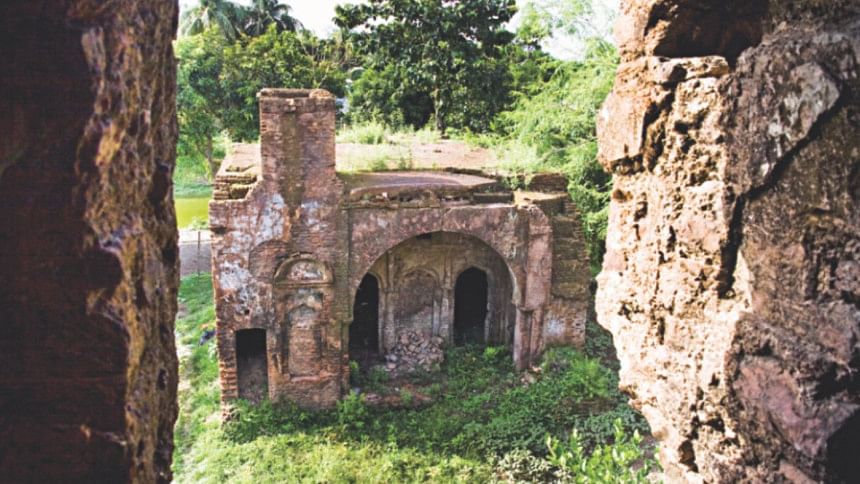Marketing the five senses of a tourist

IMAGINE lying beneath your comforters, in a quietly nestled, shingled roof cottage. The window next to your bed opens up to a world of either lush, green foliage or an uninterrupted sea beach dotted with palm trees. There are adventures to be had outside and a vacation to be made memorable and you are all up for it.
Unfortunately, once the novelty of your exotic vacation wears off, reality starts to rear its ugly head and its all not as picturesque as once seemed. The foliage is littered with plastic bottles and chips packets and there is a malodour around.
Sometimes, the room service is terrible and electricity can be erratic. Mosquitoes are a whole different issue and once you tire of that fine dining in your hotel, the options seem limited. There are things the brochures tend not to tell you and those are the things Bangladesh can really start focusing on if 2016 is indeed to be the impetus for the tourism sector.
Approaching tourism in 2016 the same way that we did in 2015 cannot bode well for the tourism sector of the country. The age-old reliance of appealing to the same old sense, the one of sight, can only distinguish us from other destinations for so long.


The paradigm in terms of what consumers want from their experiences has changed and now tourism must undertake the same holistic approach as most other products that we aim to market. For a tourist experience to be everlasting and more importantly to influence the consumer in question for a repeat purchase, it is now pertinent to target and satisfy all five senses.
The five senses are sight, sound, smell, taste and touch. To make a tourist's experience really stand out, one must tailor recreational activities appealing to all these senses. Without the ability to market tourist experiences as part of the experiential paradigm, countries can no longer remain competitive in the tourism sector.
A case in point that many have discussed on numerous occasions is one of Cox's Bazaar. For far too long the mantra marketed has been that of “the longest natural beach in the world,” a campaign conceptualised to target the sense of sight only. On the other side of the coin, one can take the example of the much smaller Sentosa Beach located in Singapore. Although dwarfed in terms of size, Sentosa offers tourists more than just a beach experience, with restaurants, beach activities, parks, movie theatres and clubs littered along the beach.
All this is provided with the most modern of amenities making the experience in Sentosa Beach much more rewarding than the one in Cox's Bazaar.
While one may point out the gulf of difference between the expenditure available for Sentosa and that for Cox's Bazaar, there is another aspect that can be easily targeted and marketed.
Conventional marketing techniques treat the consumer as a rational consumer who only wishes to maximise the utility they derive from consumption in the most functional of manners. Sensory marketing, on the other hand, points out that producers can actually add more values and create a form of experiential marketing where consumers are treated as both rational and emotional, thus adding more areas by which they can be attracted.
Bangladesh's strength in appealing to these cognitive, behavioural, emotional and other values can almost be considered unmatched. Research points out that a tourist's experience can be intensified when faced with pristine and unmolested countryside.

The presence of water, vegetation, wildlife and such along with activities such as bird-watching, hiking etc. makes the tourist experience more enjoyable and more memorable. Thankfully, Bangladesh has numerous such opportunities, albeit ones that are yet to be fully developed.
If one were to look at the view from Bandarban, the boat-ride through Sundarban, a cruise down one of the many rivers or even a visit to a remote location in one of the underdeveloped regions, such as on the far flung reaches of our mountain ranges, all offer the same opportunities as discussed.
A two-day stop at the capital can be used to lap up the cultural beauty and significance of the country while also appealing to palates of different sorts; the capital city's vast network of restaurants cater to a demanding range of cuisines with all kinds of ambiences up on offer. From then, one can take a short 45 minute flight and find themselves in Cox's Bazaar, home of the longest sand beach along with a rapidly developing hospitality sector.
The Surma Valley, in the Srimongol-Sylhet region offers up numerous bird-watching opportunities while there are also jungles to explore.

Very few countries can offer such a diverse range of geographical activities in such a small location and thus, quite like Malaysia or Thailand, Bangladesh can easily bank on earning a huge chunk of future GDP only from the tourist sector.
However, the problem that arises is that these areas are not equally developed so they cannot be trusted with pleasing all the senses and being THE stand out experience. While places like the Surma Valley promise many adventures, one cannot always find the best food or there aren't many activities to take part in.
The services themselves may not be up to the mark. While this is fine for those who want to rough it out, that clientele may not be most liberal with their wallets. Any tourist location must be geared towards making itself a more feasible and hence more sustainable entity instead of being something that we can put on the brochure.
The Lawacherra is a case in point. A great rainforest once, it has now been reduced to a shadow of its former self, hardly exuding the aura of mystique a rainforest usually does. Unplanned tourism and lack of supporting acts have made it a picnic spot instead of a trekking ground, defeating the original purpose of its preservation.

Another strength that we can tap into lies in Bangladesh's manpower. The presence of such a thriving labour market ensures low wages and for a sector that is heavily reliant on manpower, Bangladesh offers highly price-competitive services, which can only be another boon.
With the proper training and facilities in place, Bangladesh can easily vie to become the next big tourist destination, something some claim they already are.
The hospitality sector is itself growing with many pursuing serious careers in the industry, armed with degrees and a professional manner of conducting business. Using their knowledge and experience gained from around them, the sector seems to be picking up steam and if properly nurtured can now guarantee a growth in tourism in the near future. The year of tourism does not end with 2016 but this is the point where we start, so an eye towards the future can only help in the endeavour.

Going back to the five senses and how they can be worked, another simple example comes to mind. Think of how the lights are darkened in numerous restaurants; of course, it is to create an ambience but what ambience exactly? When the lights are dimmed, the dominant sense, that of sight, recedes to the background and your other senses are heightened. That is when you begin to enjoy more of the smell, the taste and even the texture of your food.
This is not to say Bangladesh should turn away from offering all their delicious sights on a plate, but to use another analogy, the plate itself must be decorated and not cracked or worn. The entire package is what draws a tourist back and not just one snapshot vista.
Starting from when they land in our airports, every resulting activity can be an economic boom for us. Anticipating how their senses would influence their behaviour, we can now start targeting those areas and building on them.
Perhaps in the future when you are lying in your hammock, looking down over the Bandarban hill tracts not only will you not be worried about the quality of your next meal, the smell in the air or whether there will be soft pillows and clean sheets ready for you, your hot water Jacuzzi will be prepared to wash all your worries away.
The writer is a sub editor for Lifestyle, The Daily Star.
Photo: Sazzad Ibne Sayed

 For all latest news, follow The Daily Star's Google News channel.
For all latest news, follow The Daily Star's Google News channel. 



Comments